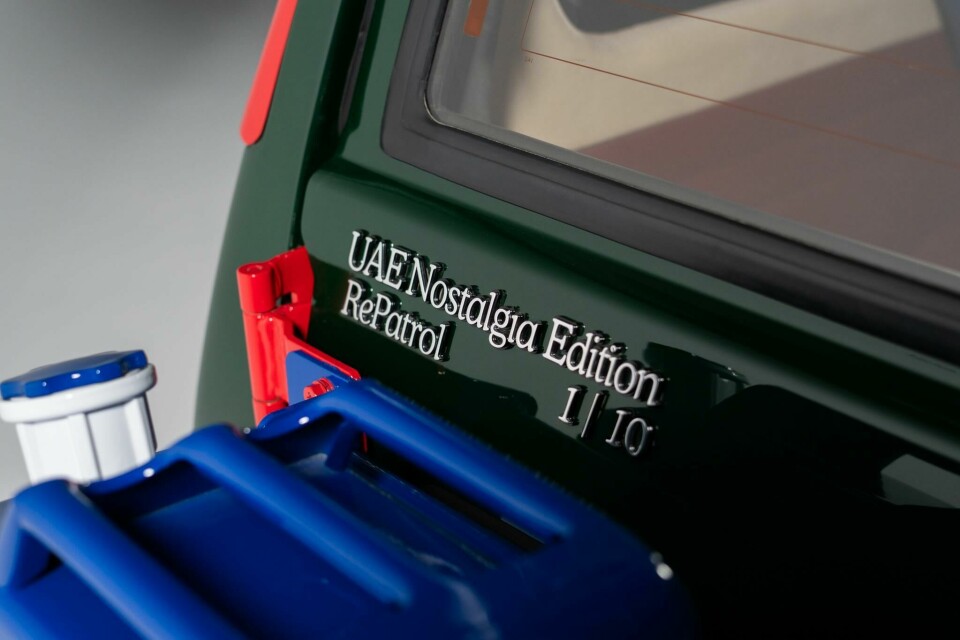
UAE studio Peec reimagines local icon
The Nissan Patrol might seem an unlikely candidate for the luxe treatment, but its connection to UAE culture means it makes more sense than you might think
The restomod craze continues to roll on, and generally to one of two set formulas. The first is to follow a nut and bolt restoration with contemporary updates to hardware and underlying components – a screen, better suspension, lights that work and brakes that stop. The second is to go a little more audacious and remove any suggestion of ‘stock’ specification, modifying bodywork, original paint, perhaps dropping in a Hellcat engine.
Based in Dubai, Peec Studio’s approach seems to somehow straddle both approaches with its new limited-run product: RePatrol. This is instantly recognisable as the original Y60-generation Nissan Patrol, the car that in many ways unlocked mobility for families in the region, with its boxy frame and approachable face. But it has been given a raft of touches that go beyond clout farming and instead lean on genuine cultural influences throughout.
Propulsion was originally intended to follow the route of its parent organisation Peec Mobility, which specialises in EV conversions for high-mileage taxis. However, a second option was announced shortly after in the form of a rumbling V8. Both, we are told, have been about as popular as the other. To learn more about the project, Car Design News sat down with Clara de Souza Bartholomeu, lead CMF designer at Peec, and head of brand Zain Shaikh, to learn more.
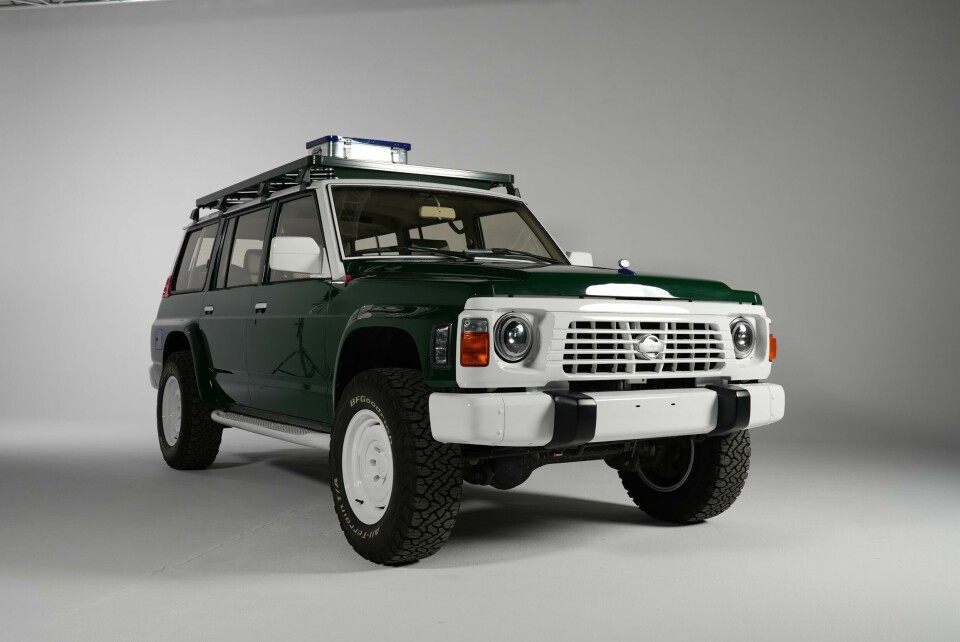
Car Design News: First off, what does the name Peec stand for?
Zain Shaikh: Peec was founded about five years ago, and it means “petrol to electric.” Our founder observed that in the UAE there’s a mandate that every four to five years the taxis need to be replaced. The reason is because these taxis tend to have around about 800,000 to a million kilometers on the clock – really high mileage but relatively young in terms of the chassis age. For the last five years we’ve been building out our EV technology and have reached a point where Peec is an expert in creating a really solid electric vehicle from a previous petrol vehicle.
CDN: When did you make the decision to do a Patrol?
ZS: We had the initial idea in October last year, which is when we kicked off the design with the first proposals. It got to a point late last year where we started looking at what else was going on in the market with a lot of these retrofitting companies, but we felt there was a massive gap in the market to leverage the merging of fashion and automotive.
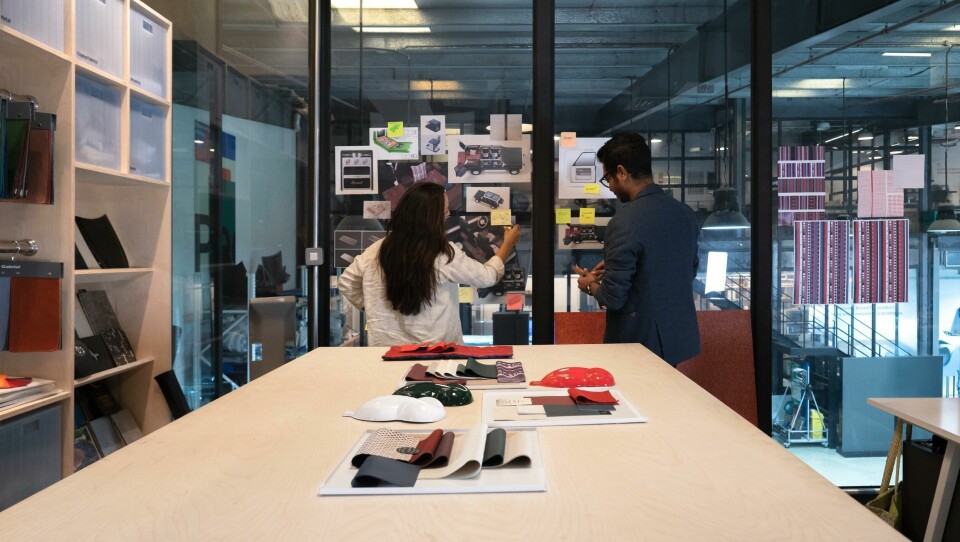
Clara Bartholomeu: We’ve seen it in a number of spaces. Louis Vuitton recently signed a ten-year sponsorship deal with Formula 1; Ferrari has been producing really high-end luxury clothing; Moncler did a collaboration with Mercedes and we’ve seen Kith teaming up with BMW. That’s one area that we didn’t feel was being tapped into by the retrofitting space.
We also noticed that the design language is always western focused, even if the market is worldwide. They’re great, but they don’t tap into the whole of the creative community of Asia, Africa and South America that have amazing creative talent. To that point, Peec has always been very proudly UAE-based so we really wanted to bring these ideas into a new project.
CDN: Why did you choose the Nissan Patrol specifically?
ZS: In order to honour our UAE roots, we first asked: what is the most iconic vehicle for this market? That would be the Nissan Patrol. It’s steeped in heritage and nostalgia. It was the first vehicle that allowed people to move around the country before there were roads. That’s how tight the relationship is between Emiratis and the Nissan Patrol.

CDN: How did this manifest in the design?
ZS: So some examples are the Ghutra, the head wear that Emirati men wear. We’ve taken that pattern and applied it to the seats of the vehicle. And then we’ve got things like an Assa stick, the traditional stick that people used to navigate in the desert and are still used in traditional ceremonies. We’ve got a Majlis, the traditional seating area where people would sit and congregate with family and community, too. There are all these beautiful, playful features that are in the car. And then obviously, on top of it all, it’s electric.
CB: Some people are absolutely in love, they think it’s the coolest thing they’ve ever seen. Interest has blown up in the last couple of weeks, which has been amazing.
CDN: And I understand there is a V8 option… What’s the response been to that?
ZS: We only introduced the petrol version recently and we’ve loaded with interest as well. I would say it is probably a 50:50 split between the ICE and EV version. What’s cool about it is the idea of repurposing the vehicle and saving all those carbon emissions, saving all those precious materials that were engineered for production, is still a core part of what we’re doing to the car. We’re still repurposing them, even though we’re not turning them into electric.
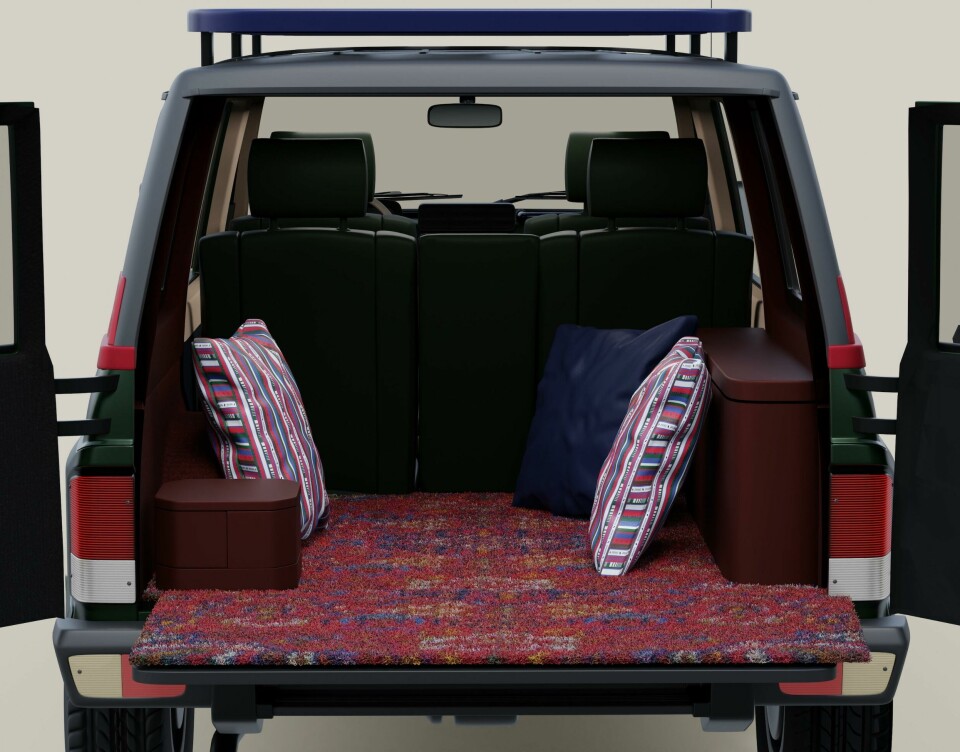
CDN: The old taxi fleet cars are easy to get hold of, but where do you source the old Patrols?
ZS: That’s one of the things we have to be quite strategic about in terms of how we launch our vehicles. Each of our capsules – our car projects – is limited to 24 units. But within the UAE, it’s relatively easy to find a Y60 Nissan Patrol. As soon as you leave Dubai, it’s all you see. It’s a very important car in the culture, most families own one.
CDN: It’s more popular than the Land Cruiser?
CB: Yeah, it’s the number one. If you ask the petrol heads here, there is a debate to be had, but generally it is the Patrol for most people. We went to Liwa festival – this big festival where people race up the sand dunes, it’s a bit like Mad Max – to understand the market a little bit better, and honestly, it was just Nissan Patrol Central.
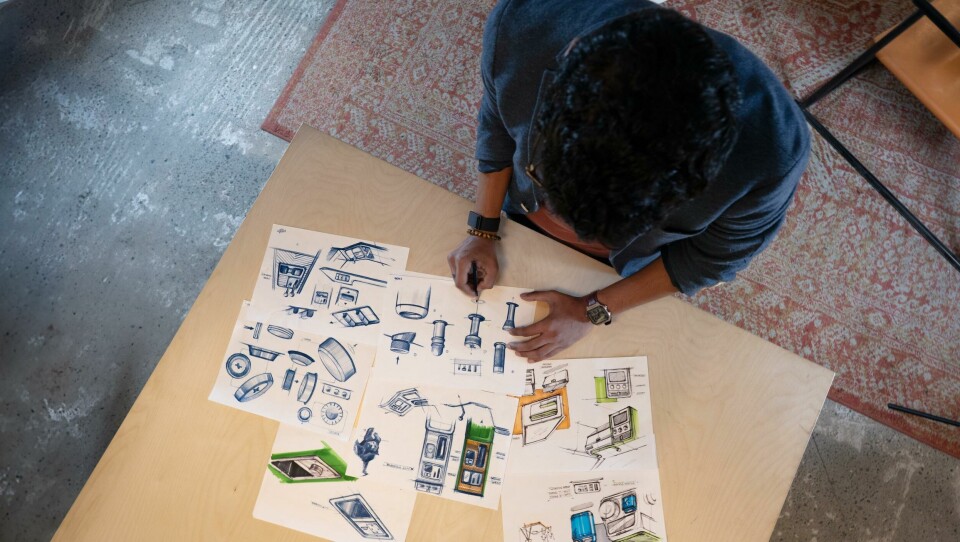
CDN: You’ve really tried to identify elements of UAE culture, not just choosing cream to replicate the sand dunes and orange for the sun, but going much deeper. How did you ensure the right boxes were ticked?
CB: We’re very lucky to be in a place where culture prevails all around. As soon as you leave the city for smaller neighborhoods, you’ll find little shops with more traditional touches, materials and patterns. So we did go on quite a few discovery trips. Even if you \walking around the streets of Dubai, people still dress with traditional customs, wear the symbols and talk about them quite often. Even in the graffiti that you see around the city, you can pick up on these little elements here and there. The sacred geometries, are also present in architecture and in graphic design. It wasn’t a huge challenge [laughs] because it’s a very generous city, culturally speaking.
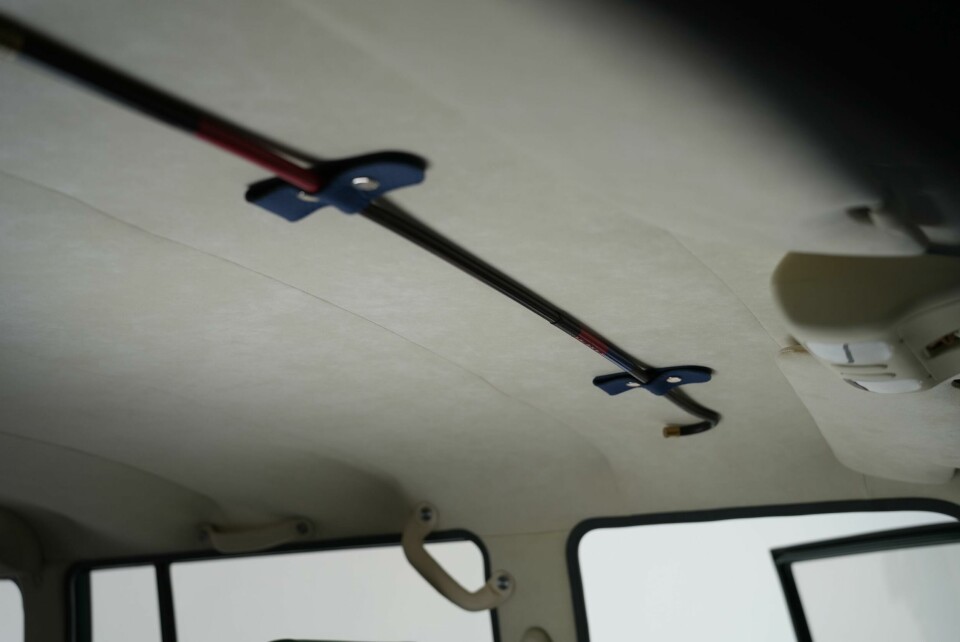
CDN: Can you point me to some more examples in the car?
CB: We did some research to understand what kinds of materials are traditionally used, such as woods used in those Assa walking sticks (shown above), what kind of finishings or embelleshments they have.
CDN: How did sustainability play into the project?
CB: For Peec, part of the job of CMF is to ensure that most parts in sound condition are repurposed. There’s always that consideration alongside our work to translate our insight and research into the UAE culture. We actually have a little bit of everything, such as natural leather from a supplier that has a very careful, secured and traced supply chain; fabrics that are made from recycled fibers and the body paint is made with a low VOC content clear coat.
CDN: Is there a particular element of the interior you’re proud of?
CB: The seats are something that people constantly talk about. They came out really nicely and feature a mix of traceable leather with recycled fabrics. They’re both very durable and representative of this aspect of the culture from the colours and textures to the actual graphics. I think it’s very impactful, and everyone who comes near the car immediately feels represented when they see them. I feel like we really nailed it – those particular tonalities make the car a bit more settled and sophisticated, but not boring.
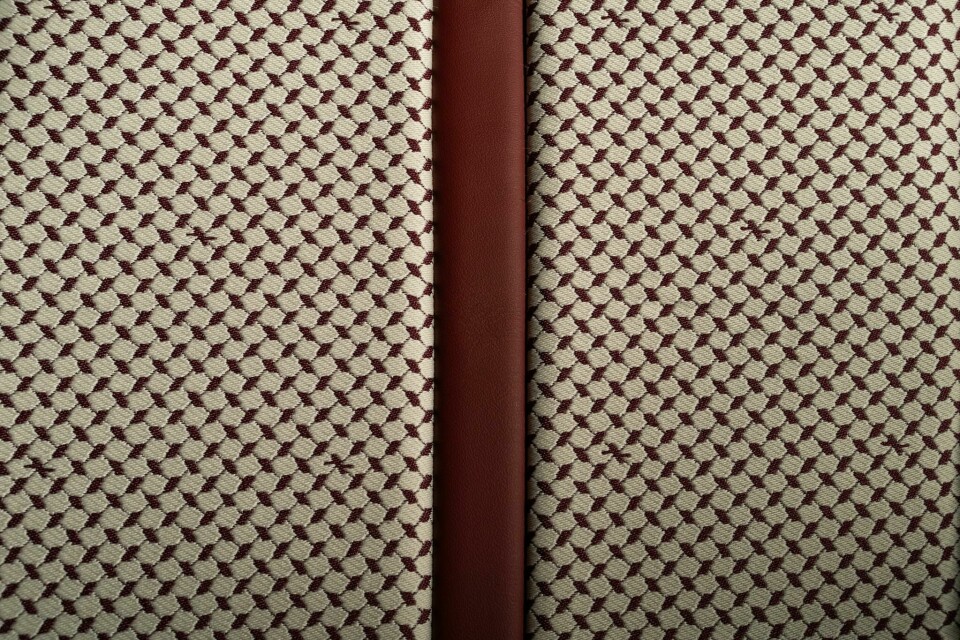
CDN: In the context of a restomod, how did you tread the line between retro and modern?
CB: One of the big challenges was finding the right balance between traditional and nostalgic design. We had two boards, basically, and one board was all traditional design – your cream colours and wood, tied with things like falconry – as well as Sadu, which is hand weaved and traditional in Kuwait. On the other side, you have the nostalgic elements, from Dubai’s sweets that have a bright yellow wrapper, Oman chips that are in a deep red and navy, and a yoghurt drink called Laban Up with bright blue packaging which is popular across the UAE. The point of the car wasn’t necessarily to create something just for Emiratis, but to represent anyone who grew up here and share memories of these products. A large majority of the population today consists of expats.
ZS: There are people who grew up here, but are not necessarily ‘from’ here, so we found all these common grounds between them and this was something that really pushed the creativity side on the car.
CB: We could have gone down the route of using five Emirati people for our photoshoot, but we chose specifically not to do that because we wanted it to be representative of the mix of people who grew up in this country. You have the Emirati mix and people from the general Arab region, we had one Filipino girl, one Indian girl. The car and our staging of it is really reflective of traditional and contemporary culture in that sense.















